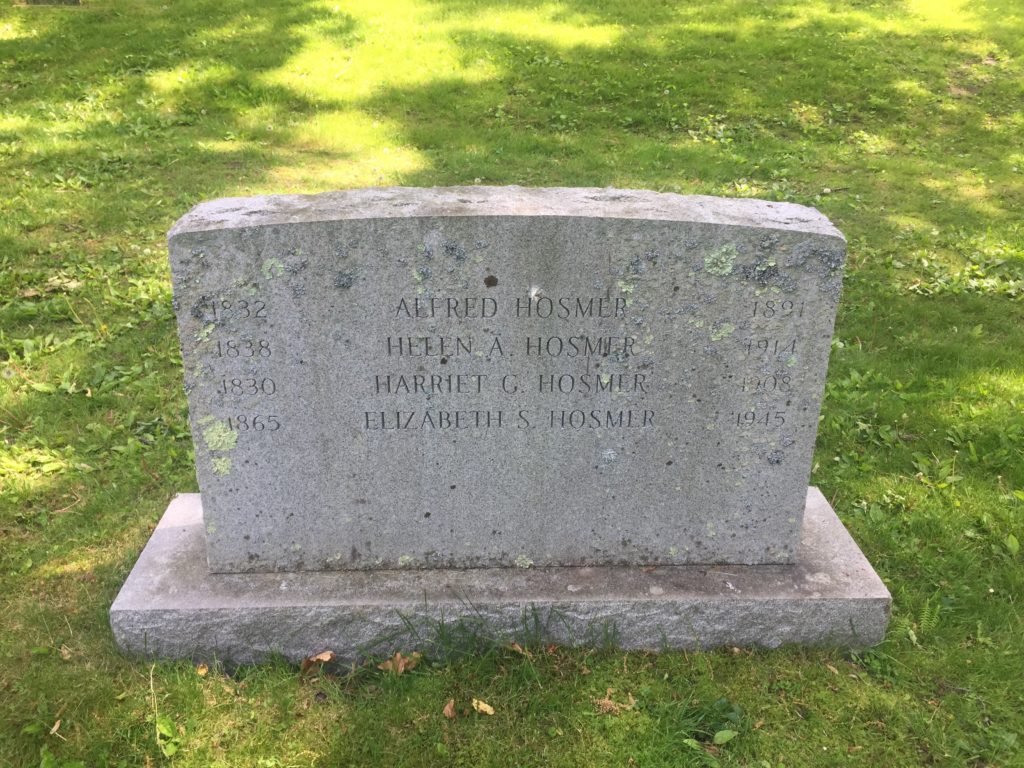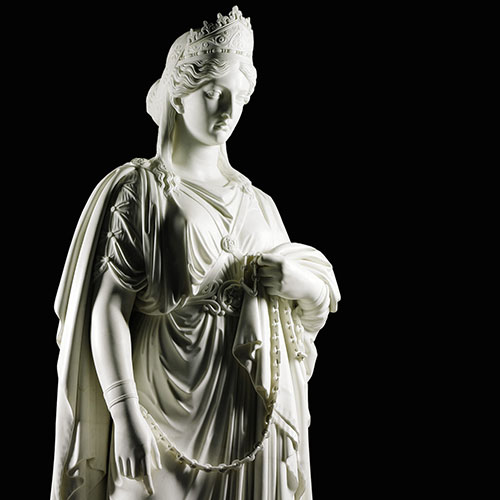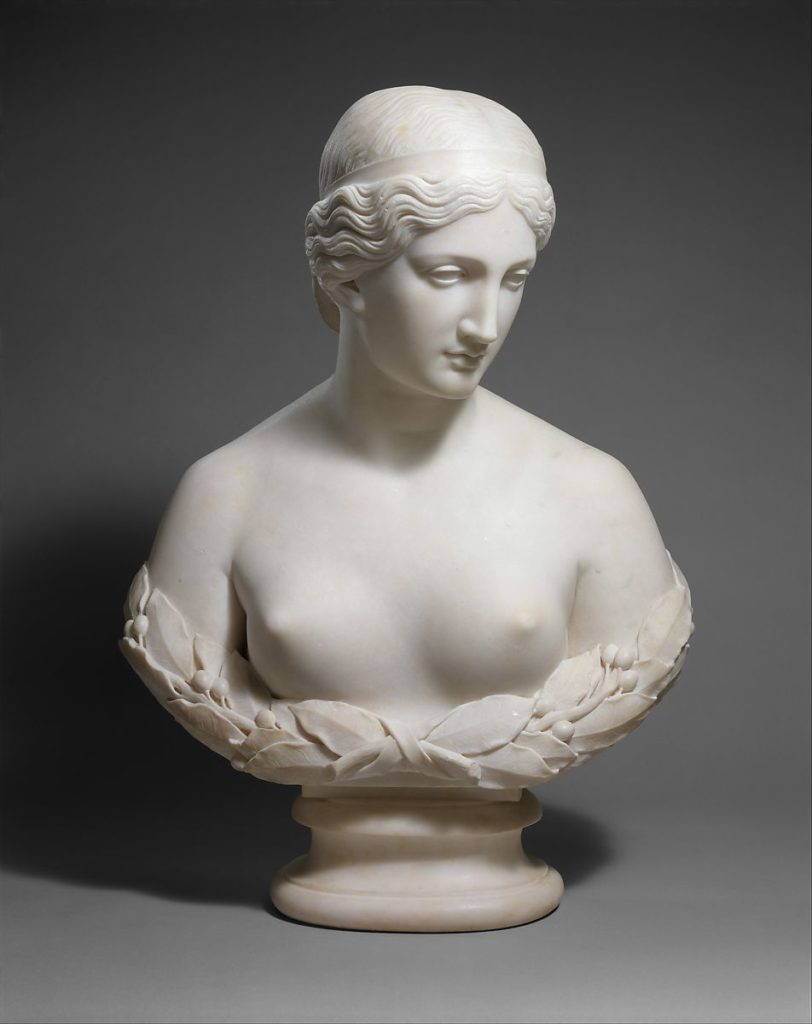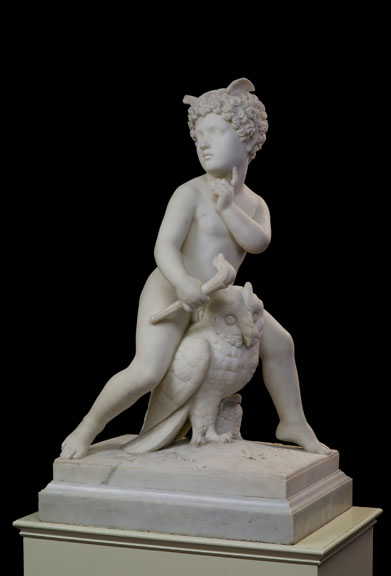Erik Visits an American Grave, Part 999
This is the grave of Harriet Hosmer.

Born in 1830 in Watertown, Massachusetts, Hosmer had a very supportive father, especially given that she was a girl. Some of this may have happened because of the hard reality of death that so often defined 19th century families. Her mother and all three of her siblings died of tuberculosis when she was a child. So it was just her and her father and she was no paragon of health. So her father determined to make her as strong as possible and encouraged her in hard physical activity such as rowing to improve her health. She seems to have enjoyed this, but also was interested in the arts and he supported her with that too. She proved quite good at modeling clay and other substances. Since her father was a doctor, this was a useful skill for him. He trained her in anatomy and she became quite good at making replicas of body parts.
Hosmer turned into quite the fascinating young woman. She went to Missouri to study modeling more and then traveled along into the American West, including meeting with some of the tribes on what was then the frontier. This was highly unusual. There was a famous moment when she was on a steamboat heading up a river if Iowa. A race was announced to the top of whatever passes for a mountain in Iowa. Hosmer not only participated but won the race. The amused ship captain named the hill “Mt. Hosmer” and it has that name to this day. In 1852, Hosmer moved to Italy to be a sculptor. full-fledged into sculpture. Plus, in the artistic and ex-pat community of Italy, she could live the way she wanted. The British sculptor John Gibson, also living in Rome, was so blown away by her early work that he agreed to take her on as his pupil, which opened the necessary doors to her in Europe. She was his only student and he taught her everything he could, while talking her up to his colleagues for her amazing talent.
Hosmer was also as close to an open lesbian as existed in the mid-19th century. Soon after going to Italy she hooked up with both the actress Charlotte Cushman and Cushman’s partner the writer Matilda Hays. Now, Cushman was already living in Italy as a lesbian and it was quite the scandal within the lesbian community when Hays left Cushman for Hosmer, though that didn’t last too long. Hosmer felt that the U.S. was no place for a modeler, especially when she went
Hosmer also became a model for other American women who wanted to be sculptors. They started going to Rome to follow her. These include people such as Anne Whitney and Margaret Foley. Nathaniel Hawthorne found her a fascinating human being, famously saying of her, “She was very peculiar, but she seemed to be her actual self, and nothing affected or made up; so that, for my part, I gave her full leave to wear what may suit her best, and to behave as her inner woman prompts.” Hawthorne wrote about these women in his novel The Marble Faun, including one character based on Hosmer.
Hosmer’s sculpture was neoclassical in style, with great attention paid to bodies, not surprising given her background. Her father had spent so much on his daughter that he eventually ran into serious financial problems. This led Hosmer to really start working hard and selling her sculptures, so this was good for his career, whatever stressed it caused. Her work had real popularity. She sold some of her early work to the Prince of Wales, for instance, which certainly helped her reputation. She received major commissions. Missouri paid her a lot to do a big statue of Thomas Hart Benton in 1860, for instance.
Hosmer was not just a sculptor but also an inventor. She developed new processes for sculpture, such as one that that could convert Italian limestone into marble (I have no idea how this would work, but what do I know about stone?). She became the most prominent female sculptor of 19th century America. Her work was shown both in the U.S. and internationally, including a bust of Isabella of Castile at the World’s Columbian Exposition, the legendary world’s fair in Chicago in 1893. This later ended up being publicly displayed in a San Francisco park. Hosmer was open about fighting for women’s rights to live the lives they wanted through her career. At a time when women generally were not allowed to take art classes or work from nude models like men (wouldn’t want to turn them into lesbians….), her modeling expertise got her around this. She stated, “I honor every woman who has strength enough to step outside the beaten path when she feels that her walk lies in another; strength enough to stand up and be laughed at, if necessary.”
She spent most of her life overseas, but did live in Chicago for awhile. Later in life, she became the long-term partner of Lady Ashburton, the widow of a British noble who basically paid for Hosmer to live in England. That relationship lasted a full 25 years.At the end of her life, Hosmer returned to Massachusetts and died in Boston in 1908. She was 77 years old.
Let’s look at some of Hosmer’s most acclaimed work:




Harriet Hosmer is buried in Mt. Auburn Cemetery, Cambridge, Massachusetts.
If you would like this series to visit other female sculptors, you can donate to cover the required expenses here. Louise Bourgeois is in Cutchogue, New York and Augusta Savage is in Hartsdale, New York. Previous posts in this series are archived here.
